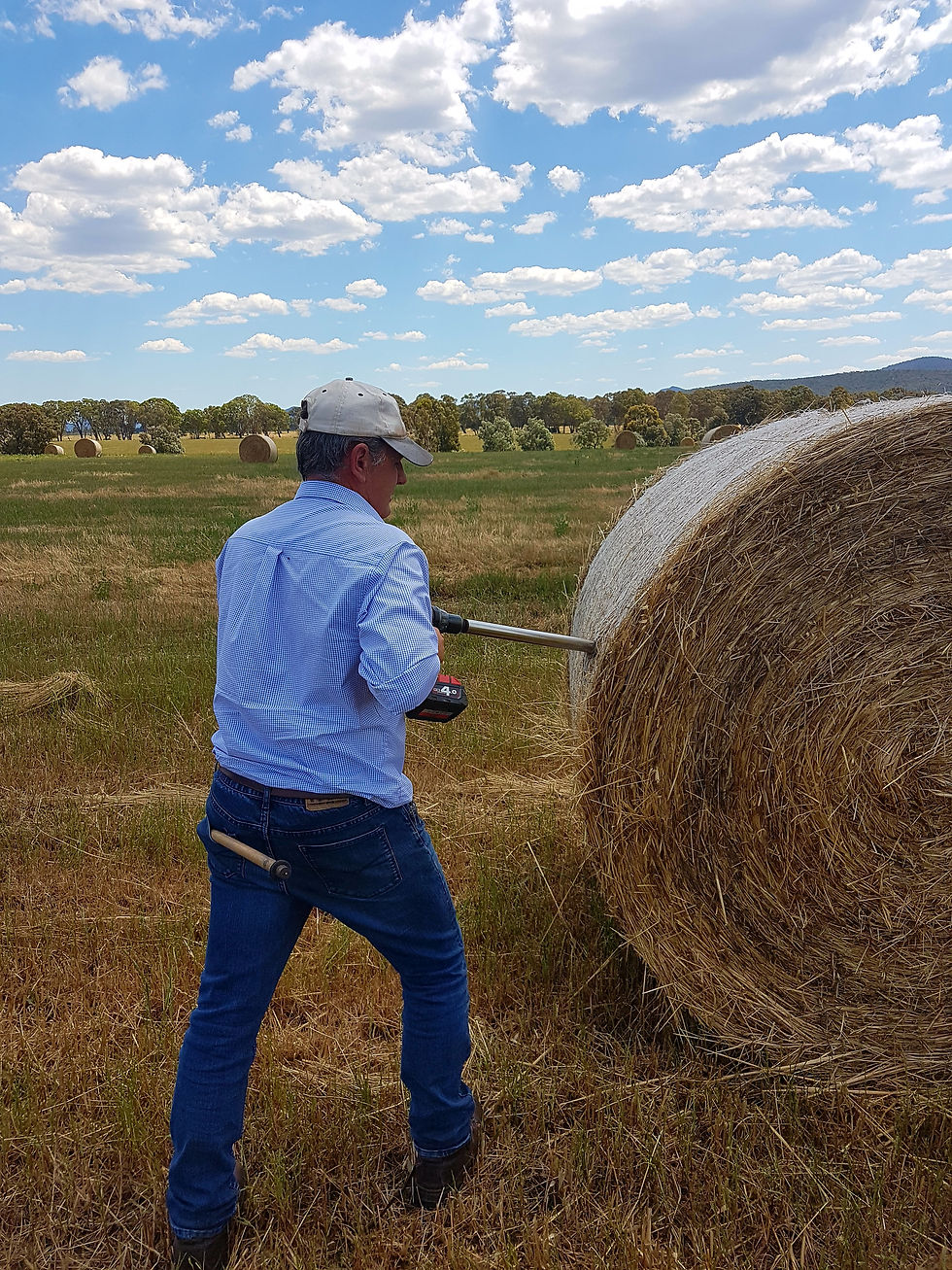Assessment of Feed Additives for Methane Mitigation
- Dr Geoff Irish
- Jun 13
- 3 min read
By Dr Geoff Irish, TRAC Senior Technical Manager
To my knowledge the only two products currently available in Australia that have been VEERA certified for Methane abatement are Bovaer (3-nitrooxypropanol; 3-NOP) and Agolin. Following is a summary of the pros and cons of each of these products as well as my recommendation.
Bovaer
Bovaer is a feed additive consisting of silicon dioxide, propylene and the active ingredient 3-NOP (3 -nitrooxypropanol), which works by inhibiting an enzyme involved in methane production in the stomachs of ruminants. It has been developed by dsm-firmenich. The cows fully metabolise the product and it does not appear in milk or meat.
Inclusion Rate:
60-80mg of 3-NOP/kg of dry matter intake.
Pros
Bovaer is the most extensively studied and scientifically proven solution to the challenge of burped methane to date — with more than 130 on-farms trials in 20 countries and more than 80 peer-reviewed scientific studies.
On average Bovaer reduces emissions by 30% from dairy cows and 45% from beef cattle.
Bovaer delivers measurable methane reductions within hours of ingestion.
Bovaer can be easily added to existing feed systems, making it practical for farmers to adopt.
Multiple studies have shown that Bovaer does not negatively impact the health, growth, or milk production of livestock.
The additive breaks down quickly in the animal’s digestive system, leaving no residues in meat or milk products.
Regulatory authorities, including the European Food Safety Authority (EFSA) and the U.S. Food and Drug Administration (FDA), have evaluated Bovaer’s safety and approved its use. It has also been approved for use in numerous other countries, including Australia, Canada and the UK. Bovaer is safe for animals, humans, and the environment.
Cons
Price point of Bovaer is high at approximately 50c/cow/day for dairy cows.
Trial results on Bovaer fail to support production improvements. So, payback remains only on methane reduction.
Considering a $0.50/cow/day cost of feeding Bovaer to dairy cows and a 30% reduction in methane emissions, carbon would need to be priced at $109/tonne to maintain a neutral net return from Bovaer supplementation. Currently worth $34.10/tonne in Australia.
Due to Bovaer breaking down quickly in the animal’s digestive system it must be fed every 2-4 hours. Difficult in most production systems other than TMR.
Impact of Bovaer in reducing methane falls away when animals are on higher fibre diets (e.g. less effective in extensive grazing systems).
Agolin Ruminant
Agolin Ruminant is a pre-mixture of flavourings. The main active compounds are food grade and chemically defined plant extracts including coriander (Coriandrum sativum) seed oil (up to 10%), eugenol (up to 7%), geranyl acetate (up to 7%) and geraniol (up to 6%) along with some preservatives such as fumaric acid. Although the exact mode of action is still unclear, INRAE, the French National Research Institute for Agriculture, Food and Environment, discovered a positive shift of the rumen microbiota after a few weeks’ adaptation time – namely a significantly larger rumen bacteria population and a reduced number of protozoa when Agolin was fed to cows.
Feeding Rate:
1 gram/cow/day.
Pros
Agolin Ruminant is a robust product. Can handle all production and delivery systems, including via the drinking water.
Price point of Agolin Ruminant is low at around 6c/head/day for dairy cows.
Published production data response ensures viable payback. A meta-analysis conducted in 2020 suggested that supplementation of lactating dairy cows with Agolin Ruminant (at 1g/ cow/day) during a period greater than 4 weeks had a positive effect on milk yield (+4%) and decreased methane emissions (approximately 10%) without affecting feed intake and milk composition.
No issues with animal health and welfare.
No food chain safety issues.
No environmental issues.
Cons
Agolin Ruminant reduces methane emissions by 10-15% (half that of Bovaer).
Agolin Ruminant takes 3 - 4 weeks to alter the rumen microbiota (adaptation) and to achieve the benefits.
My Recommendation Despite Agolin Ruminant having a reduced effect on methane emissions compared to Bovaer it will achieve the greatest economic benefits. This is due to Agolin Ruminant’s positive effect on animal productivity and its low cost of implementation. For this reason, I recommend Agolin Ruminant.
For more information on Dr Geoff's assessment and the products mentioned,
please get in touch with your local TRAC Expert In Ruminant Productivity
on 08 8733 1888 or email us at info@totalresult.com.au
Our Consultants
EXPERTS IN RUMINANT PRODUCTIVITY
Tom Thorn
0427 243 319
Owen Rees
0429 437 823
Mark Facy
0427 243 320
Eliza Mackereth
0492 243 319
To download a copy of this article, please click the link below...




Comments